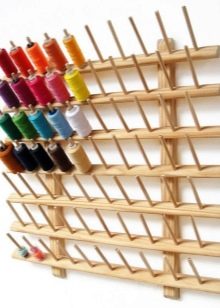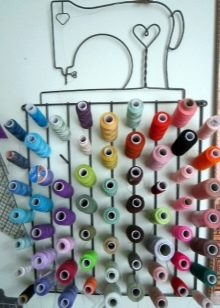Thread storage options
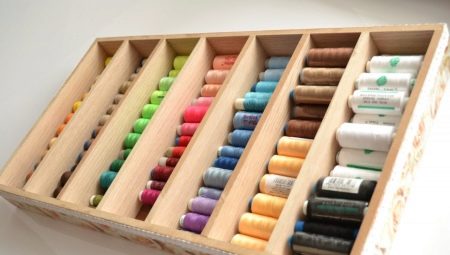
A person who is constantly engaged in needlework, usually has significant reserves of various kinds of threads. Organizing all of these stocks makes the creative process more convenient and enjoyable.

Primary requirements
The storage of threads should be organized in such a way that they do not get entangled, twisted or torn. When a bag or a box is filled with coils, their ends sooner or later intertwine. As a result, small knots appear on the finely twisted thread, which can tear the fabric or otherwise spoil the product being created.
Protection against any dirt and dust is equally important. If they are engaged in sewing regularly, then for protection it will be enough to use a hermetically sealed organizer or other container. In other cases, it is suggested to additionally protect materials for handicrafts using transparent film or small bags with a zip-fastener.
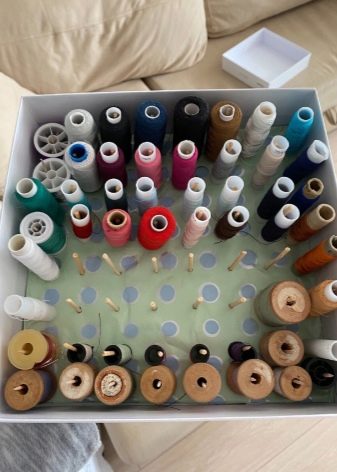
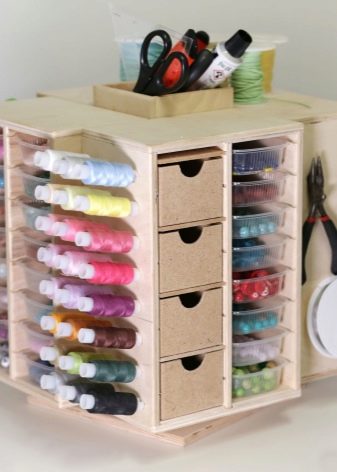
The threads used for sewing do not withstand temperature fluctuations, as well as a strong increase or decrease in humidity. In the absence of the necessary protection, they begin to exfoliate and disintegrate into separate parts. In addition, an incorrectly stored thread begins to fluff, becomes covered with hooks and irregularities, which means that it turns out to be very difficult to use it for needlework.
If such damaged material is installed in a sewing machine, it can lead to needle breakage and even damage to the entire device.
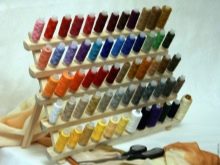
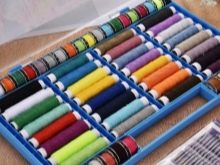
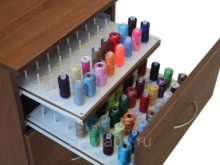
When organizing a storage system, it is better to do it in such a way that all stocks can be distributed by manufacturer, and then by numbers or colors. Compositional classification is also a good solution. It is better to distribute repeating thread numbers in transparent bags with a zip fastener, fastened together with elastic bands or strings.
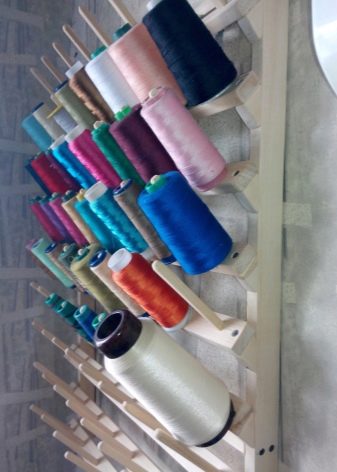
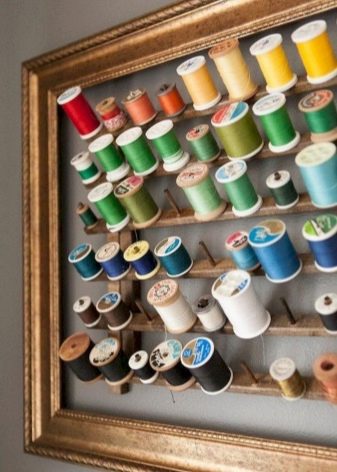
Using special tools
In stores for needlework today, it is possible to find a huge number of ready-made devices that allow you to store threads. For example, it is very convenient to purchase a specialized organizer cabinet in which you can place all sewing accessories - from needles to fittings. It can also be a small tabletop rack with pull-out shelves and opening compartments. It makes sense to purchase a fabric hanging organizer: despite the fact that it is intended for toys, gardening tools or household items, spools and spools of thread will fit perfectly into pockets. A special rotating organizer makes it easy to access any materials.
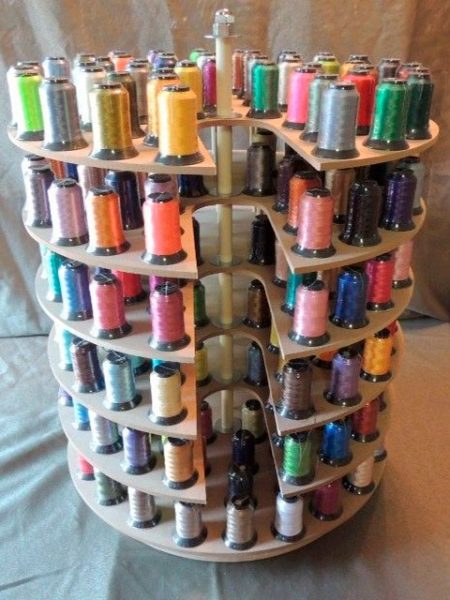
A plastic store container with cells, the dimensions of which correspond to the bobbins, will allow you to collect all the sewing supplies and place them compactly in a desk drawer. An alternative to it can be a handicraft chest or a wooden box - a more attractive and expensive item with the necessary number of internal compartments. A pencil case for needlework is an organizer in which bones with a floss are laid out. Since this accessory does not differ in size, it is only suitable for flat and bulky storage.
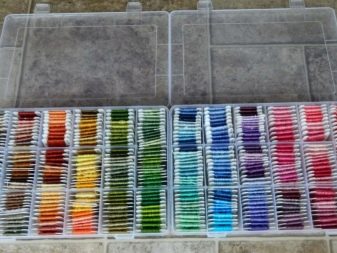
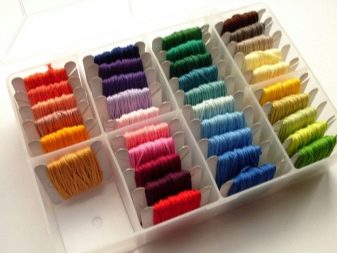
For the simultaneous storage of floss threads and embroidery needles, a special plastic organizer with triangular walls, for example, the Pako brand, is suitable.
Original ways
At home, it is customary to organize the storage of coils using various kinds of cans made of glass or plastic. The sizes of containers are selected depending on the dimensions of bobbins, cardboard boxes, pieces of cardboard or sticks on which the fibers are wound. This method is only convenient for unopened sewing threads and leftover yarn, as regularly used patterns are more likely to get tangled.
In the presence of a large amount of material, classification is important: for example, you can distribute the entire volume by color, coil size or brand. Each container, especially an opaque one, must be marked with a label indicating the contents. It is worth mentioning that the choice of glass containers, which allows you to immediately see the contents, turns out to be more successful when there is a large amount of stock. In order to avoid the appearance of disorder inside the containers, it is better to give preference to small volumes.
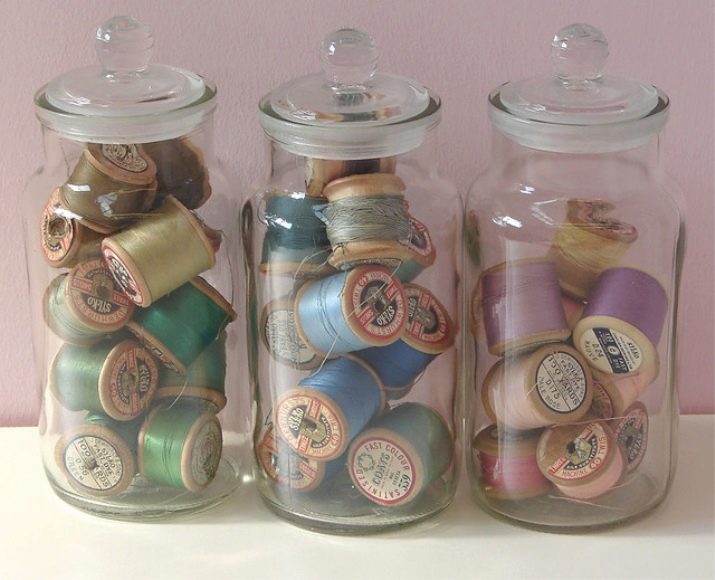
It is quite easy to make a wall organizer with your own hands at home. It is suitable, however, only for threads located on spools. This design is ideal to avoid tangling the materials, as each type of thread fits on small wooden sticks or screws fixed to the base in the form of a square or rectangle. There are a lot of ideas on how to design a wall organizer not only compactly, but also stylishly. In cases where the appearance of the storage system does not play a big role, it is proposed to simply spread the threads into sachets, and then fix them on the board with pushpins.
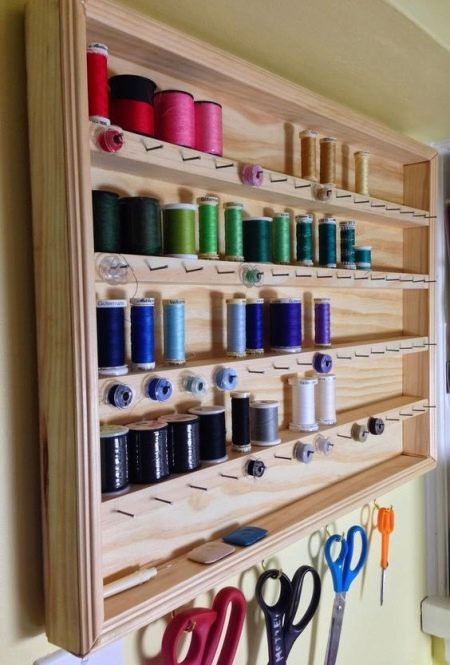
If you have your own workshop, you can think of a full-fledged stand for storing materials. An individually designed model will allow you to place all coils, bobbins and leftovers in the most convenient way. As a basis for the rack, a sheet of plywood or chipboard of such a size is usually used, which is enough to demonstrate all the stocks. The rest of the homemade design is assembled in a similar way to a small wall organizer.
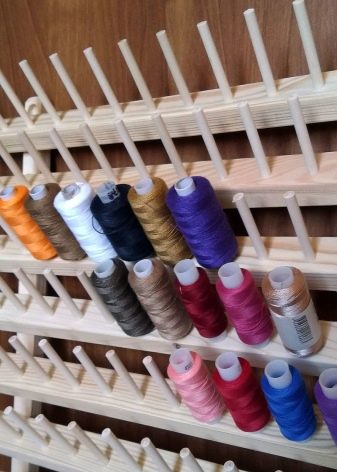

If desired, the stand is upholstered with a decorative cord or repainted in a suitable shade, and then using a pencil and a ruler, marking for pins is made on it.
It is important that more free space is allocated for the spools, and much less space for the spools. If thin long nails are used as pins, they are immediately driven into the base. If you decide to use bamboo sticks fixed with glue, then you will additionally have to drill holes for them. By the way, a smaller stand, made in the same way, is suitable for placement in a drawer or even on a table. In addition, all these pegs can simply be driven into the door of an existing cabinet in the room, or even fixed on the surface of an unused dummy.

You can also make the system yourself from a round tin box left over from cookies. First of all, coils of the same size are tightly set in a circle near the wall and fixed from the inside with a cardboard partition. It will be possible to get it by cutting and gluing a strip of dense material into a ring, the width of which corresponds to the height of the walls of the container. The next circle of coils is already built with support on a cardboard wall. From the inside, it is similarly fixed with a reliable partition. The process continues until the entire box is full.
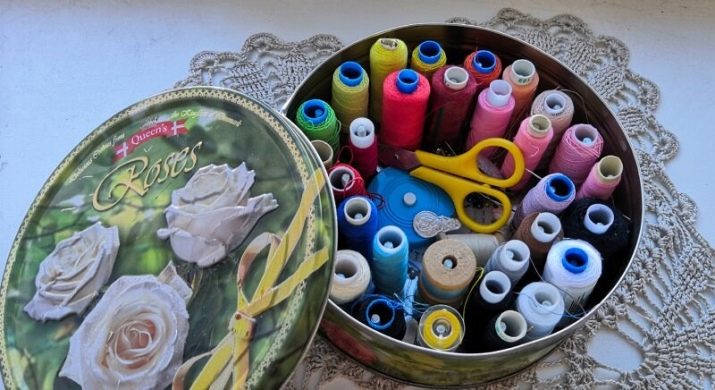
By the way, an alternative to the latter can be a 5 liter plastic water bottle, the walls of which are cut to the required size. For greater aesthetics, and also so as not to get hurt, it is better to glue the walls of the base with fabric pieces.
One of the common life hacks for organizing a thread storage system is to use ordinary cardboard candy boxes for stocks. Usually, no more than three rows are organized inside small-sized boxes. A shoe box will do as well. Several small nails, toothpicks or old colored pencils, planted on glue, are stuck into its bottom, on which coils are then placed. A curious organizer is obtained from old cans, decorated with cloth and fixed sideways on top of each other.
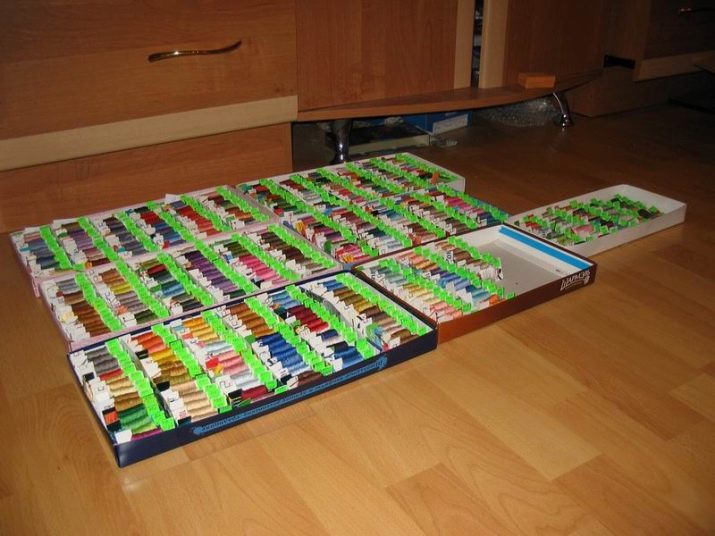
The rest of the thread is proposed to be laid out in plastic bags for collectible coins, which are then removed to the folder with files. To make the work at the sewing machine more convenient, you can sew on the tablecloth pockets of the appropriate size. The fabric is laid under the unit so that everything you need is at hand. An option with fixing containers and fabric pockets directly under the table is also suitable. Boxes from under old discs are used to store floss threads, cases with needles and leftover materials. Since these systems take up little space, they can simply be placed on a bookshelf for quick access.
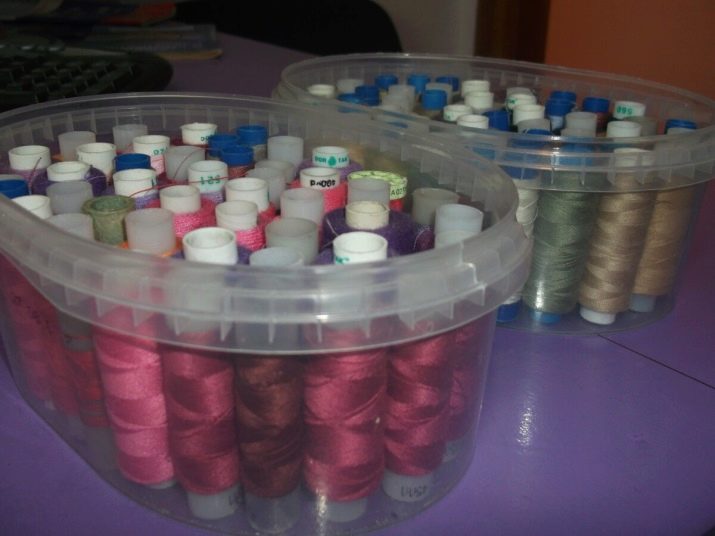
Beautiful wall organizers are made from a hoop on which the fabric is stretched. It will not work to store a large amount of yarn in them, but organizing everything necessary for the current project will not be difficult.
